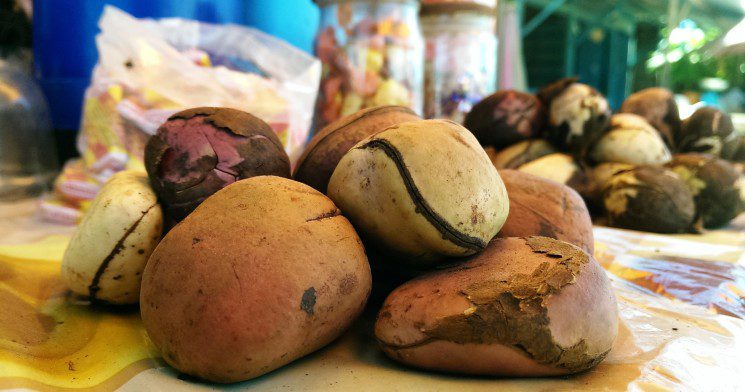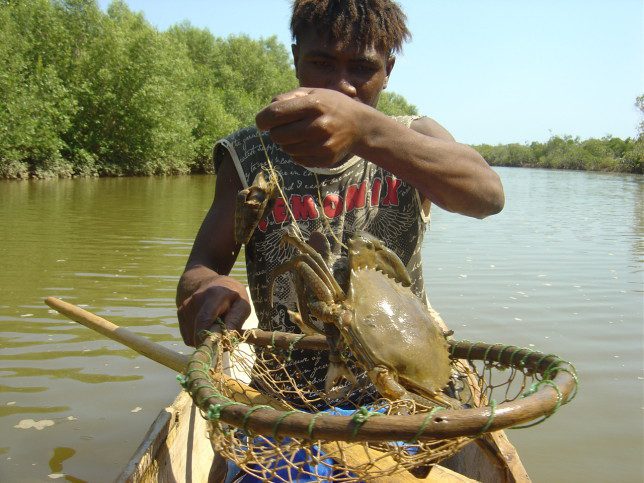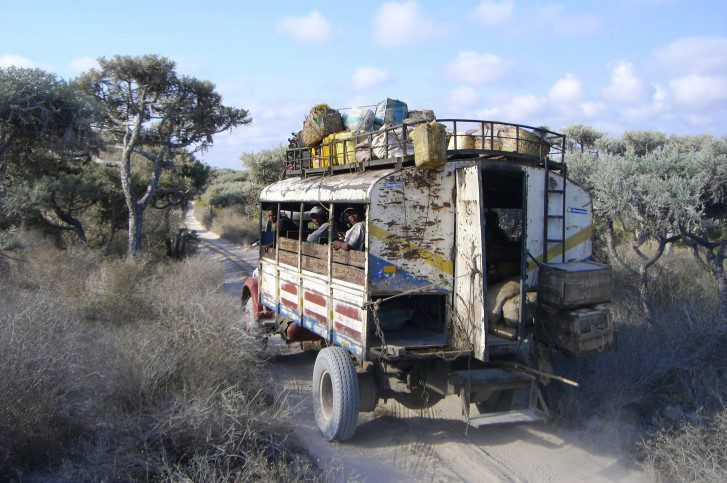[avatar user=”Charlie” size=”thumbnail” align=”left” link=”http://blog.blueventures.org/author/charlie/” target=”_blank” /] by Charlie Gough, Monitoring and Evaluation Coordinator, UK
I drink tea in the afternoon, primarily because I am very ‘English’, but also because coffee seems to have a strange effect on me past midday and I start getting the jitters! So when Aude, our quietly spoken Blue Forests Coordinator in Ambanja, took us out for a cup of kola tea in the afternoon during a recent visit to the northwest of Madagascar I didn’t think anything of it.
It tasted wonderful, ground kola nut boiled up with cinnamon, vanilla, sugar and lots of wonderful creamy condensed milk it was like Christmas and a wonderful way to start the afternoon!

The kola nut is a caffeine-containing nut of evergreen trees of the genus Cola that are native to the tropical rainforests of Africa. Often used as a flavour in beverages, you may have consumed this in a popular variety of fizzy pop – although it’s less commonly used today.
My afternoon flew by with meetings and emails, drawing up concept models, and possibly a little dancing around the office, and it was 9pm when I looked up from my computer at Kitty, Blue Ventures Country Coordinator all packed up and ready to leave.
Stopping in a little local bar for some food, we were chatting about the day and snacking on some brochettes (kebabs) when three local men overheard us and came over to (as usual) practice their English.
It soon transpired that the one of the guys works as a fisheries collector for a Chinese collection company specialising in mud crab (Scylla serrata). I, still buzzing from the afternoon’s tea session quickly transformed into the true nerd that I am, and short of opening my notebook and getting out a pen, conducted an off the cuff and very rough key informant interview with the guys while sat in the bar.

Mud crabs are big business in the northwest but most of the money goes to those higher up the market chain
This guy is one of four collectors that work for the same company/buyer – a Chinese family that live in the capital Antananarivo (Tana). He tell us how previously he would collect crab in the villages around Ambanja and and send it by bus (known in Madagascar as taxi brousse) to the buyers in Tana.
Now it takes between 12 and 36 hours (depending on the state of the roads, weather and bus!) to travel by bus between Ambanja and Tana, and doing this trip while squished in a straw bag with 20 others and packed in with wet mud doesn’t sound like a pleasant experience, even for a crab. He explains “There is a high rate of mortality when transporting crabs like this and for every 100kg of crab we would lose maybe 10-20kg because they would die on the road to market.” That is a huge loss.
He goes on to explain how things have changed, “The family I worked for used to be the only ones collecting crab in the region but this has changed. The market for crab has grown and new buyers have started buying crab in the region. There are now five buyers (all Chinese) in Ambanja, and now I buy crabs from the villages and sell it directly in Ambanja. This means that I don’t lose so much profit by having to take the crab to Tana.”

Crab mortality can be very high when being transported to Tana on taxi brousse
I ask him to break down the economics for me; seriously getting deep in discussion about crabs at 11pm is exhilarating stuff! “So I will buy one kilo of crab for 2000 Ariary in the village from the fisherman,” he tells me, “and then pack it in a basket with mud and a little bit of water to bring it back to Ambanja where I sell the crab to the Chinese buyers for between 10,000 and 12,000 Ariary depending on the quality. Large male crabs that are strong and fat are worth about 10,000 Ariary per kilo, but large females with eggs are the best and they pay 12,000 Ariary for them.” That is a big mark up and targeting gravid females is not really something that is sustainable over the long term as their offspring are lost in the process.
I ask him about this and explains, “There is a law in Madagascar for not collecting small crabs,” further explaining, “if we take the small crabs (indicating the size with his fist) this means there will be fewer crabs in the future for our children.”
Asking further about the collection of gravid females he explains, “Madagascar is a poor country and the people here are poor and even though they know that this is killing their resources they are prepared to do that in order to put food on the table for their children today.” This is something that we hear over and over working with fishing communities in southwest Madagascar. We believe that by working with these communities to demonstrate the benefits of fisheries management there will be food on the table today and tomorrow, and some communities in western Madagascar are already working to augment the national crab closures by holding community led closures in mangroves.
Getting home, I am not sure if it was the kola tea or the late night conversations about crabs which had me so excited but I couldn’t sleep until 3am!

